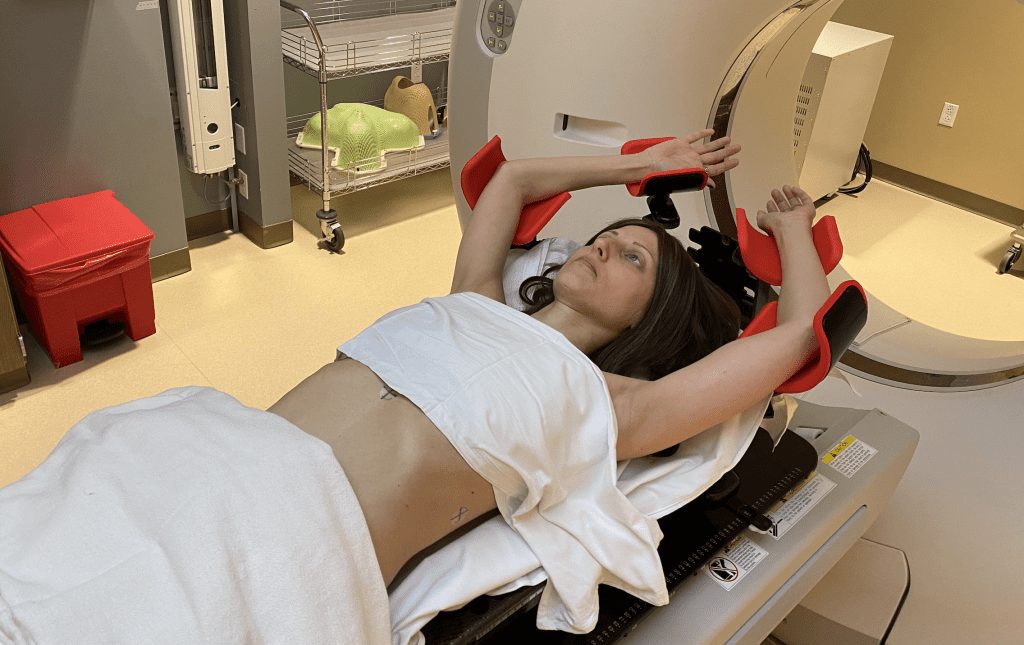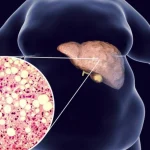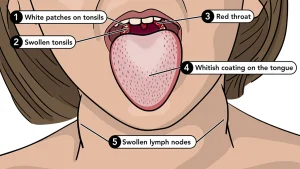
Learn about the characteristics and treatment options for early stage breast cancer.
Understanding Early Stage Breast Cancer: How Serious is it?
Early stage breast-cancer is a diagnosis that demands attention and informed decision-making. It refers to cancer that is localized within the breast or nearby lymph nodes. While it is categorized as “early,” this designation doesn’t diminish the seriousness of the condition. Instead, it emphasizes the critical importance of timely intervention.
This stage encompasses a range, from carcinoma in situ (stage 0) to stage II. Carcinoma in situ signifies abnormal cells confined to the milk ducts or lobules. Although not invasive, if left untreated, they have the potential to evolve into invasive cancer. Moving to stages I and II, we find small tumours within the breast tissue or nearby lymph nodes. Even within these stages, there are variations in size, location, and aggressiveness of the tumour.
Detecting breast-cancer early significantly improves the chances of successful treatment and long-term survival. Regular screenings, including mammograms and self-examinations, play a pivotal role in early detection. When identified at this stage, treatment options tend to be less aggressive, leading to more favourable outcomes.
The treatment approach for early stage breast-cancer often involves surgery, radiation therapy, and sometimes systemic treatments like chemotherapy or hormone therapy. The specific plan is determined by factors such as the type and stage of cancer, as well as the individual’s overall health and preferences.
Emotionally and psychologically, early stage breast cancer can be a challenging journey. The diagnosis itself can be overwhelming, and the path through treatment may elicit a range of emotions, from fear and anxiety to hope and resilience. It’s crucial for individuals facing early stage breast cancer to have a strong support system in place, including healthcare professionals, family, and friends.
In conclusion, early stage breast cancer is a serious diagnosis that necessitates prompt attention and comprehensive care. Understanding its various stages and the significance of early detection empowers individuals to take proactive steps towards treatment and recovery. While the journey may be challenging, there is hope, and with the right support and medical guidance, many individuals go on to lead healthy, fulfilling lives after early stage breast cancer. By prioritizing regular screenings, staying informed, and seeking timely medical advice, we can collectively work towards a future where early stage breast-cancer is not only treatable but preventable.
Understanding Early Stage Breast Cancer: What Determines it?
Early stage breast cancer is characterized by its localized presence within the breast tissue or nearby lymph nodes. To comprehend what determines early stage breast cancer, it’s crucial to consider various factors that play a significant role in its development and detection.
One of the primary determinants is the size and location of the tumour. In early stage breast cancer, the tumour is typically small and confined to the breast tissue or nearby lymph nodes. This characteristic distinguishes it from more advanced stages where the cancer has spread to distant organs.
Another crucial factor is the aggressiveness of the cancer cells. Some tumours may grow slowly and have a lower likelihood of spreading, while others may be more aggressive and have a higher potential for metastasis. Understanding the aggressiveness of the cancer is essential for developing an effective treatment plan.
Furthermore, the type of breast cancer also influences its staging. There are various types of breast cancer, including ductal carcinoma in situ (DCIS), invasive ductal carcinoma (IDC), and invasive lobular carcinoma (ILC), among others. Each type has distinct characteristics that impact its behaviour and treatment approach.
Early detection is paramount in determining early stage breast cancer. Regular screenings, such as mammograms and self-examinations, play a crucial role in identifying abnormalities in the breast tissue. Detecting cancer at an early stage provides a higher likelihood of successful treatment and long-term survival.
Additionally, genetic factors can contribute to the development of early stage breast cancer. Certain gene mutations, such as BRCA1 and BRCA2, are associated with an increased risk of developing breast cancer. Understanding one’s genetic predisposition can lead to proactive measures for early detection and risk reduction.
In conclusion, several factors determine early stage breast cancer, including the size and location of the tumor, the aggressiveness of the cancer cells, the type of breast cancer, early detection through screenings, and genetic predispositions. Recognizing these determinants is crucial for effective diagnosis, treatment, and long-term management of early stage breast cancer. By staying informed and proactive, individuals can take control of their health and increase their chances of successful outcomes.
Navigating External Beam Radiation
What is external beam radiation for breast cancer?

External beam radiation is a vital component in the comprehensive treatment of breast cancer. It is a highly targeted form of therapy that utilizes high-energy X-rays to destroy cancer cells and prevent their ability to multiply. This treatment is administered externally, meaning the radiation source is located outside the body.
The process of external beam radiation begins with careful planning. Before treatment commences, a team of medical professionals, including radiation oncologists and dosimetrists, will collaborate to determine the precise dosage and angle of radiation. Advanced imaging techniques, such as CT scans and MRI, are used to create a detailed map of the treatment area, ensuring that the radiation is focused solely on the cancerous cells.
The actual administration of external beam radiation is a non-invasive procedure. Patients lie on a treatment table, positioned in a way that allows the radiation to be precisely targeted. The machine delivering the radiation emits a beam that penetrates the skin and targets the cancer cells within the breast tissue. It’s important to note that while the procedure itself is painless, the cumulative effects of radiation may lead to localized skin reactions or fatigue, which are carefully monitored and managed by the medical team.
The frequency and duration of external beam radiation sessions depend on the specific characteristics of the cancer, including its type, size, and location. Generally, treatments are spread out over several weeks to allow the healthy cells time to recover between sessions. This approach helps to maximize the impact on cancer cells while minimizing damage to surrounding healthy tissue.
In conclusion, external beam radiation is a crucial component in the treatment of breast cancer. By employing targeted, high-energy X-rays, this form of therapy is designed to eradicate cancer cells while preserving healthy tissue. Careful planning and precise delivery ensure the effectiveness of the treatment. Understanding the process of external beam radiation empowers individuals in their journey towards overcoming breast cancer and achieving long-term health and well-being.
Exploring Breast Cancer Treatment Choices
What is the most recommended treatment for breast cancer?
Determining the most recommended treatment for breast cancer depends on several factors, including the type, stage, and characteristics of the cancer, as well as the individual’s overall health and preferences. The primary treatment options for breast cancer include surgery, radiation therapy, chemotherapy, hormone therapy, targeted therapy, and immunotherapy. Often, a combination of these modalities is employed to provide the most effective approach.

Surgery is a cornerstone in the treatment of breast cancer. It involves the removal of the tumour and, in some cases, a portion of surrounding tissue or lymph nodes. The type of surgery recommended varies based on factors such as the size and location of the tumor. Breast-conserving surgery, also known as lumpectomy, aims to remove only the tumour and a margin of healthy tissue around it. On the other hand, mastectomy involves the complete removal of the breast tissue. The choice between these options is influenced by the extent of the cancer and the patient’s preference.
Following surgery, adjuvant therapies may be recommended to further target any remaining cancer cells. Radiation therapy utilizes high-energy beams to destroy cancer cells and prevent their ability to multiply. It is typically administered externally and is highly targeted to minimize damage to healthy tissue. Chemotherapy involves the use of drugs to kill or inhibit the growth of cancer cells. It can be administered intravenously or orally and is often employed in cases where there is a higher risk of cancer recurrence.
Hormone therapy is primarily used for hormone receptor-positive breast cancers. This type of therapy targets the hormones estrogen and progesterone, which can fuel the growth of certain types of breast cancer. Hormone therapy can include medications that block hormone receptors or reduce hormone production in the body. Targeted therapy focuses on specific molecules within cancer cells that are responsible for their growth. These drugs are designed to interfere with these molecules, halting the progression of the cancer.
Immunotherapy is a relatively newer approach to breast cancer treatment. It works by stimulating the body’s immune system to recognize and attack cancer cells. While it has shown promising results in certain cases, its application is still being researched and refined.
In conclusion, the most recommended treatment for breast cancer is a personalized approach that takes into account the specific characteristics of the cancer and the individual’s overall health. This often involves a combination of surgery, radiation therapy, chemotherapy, hormone therapy, targeted therapy, and, in some cases, immunotherapy. The decision-making process is a collaborative effort between the patient and their healthcare team, aiming to provide the most effective treatment plan with the best possible outcomes. Understanding the range of breast cancer treatment options empowers individuals in their journey towards recovery and long-term well-being.
Innovations in Breast Cancer Care
What are the new advancements in oncology?
In recent years, the field of oncology has witnessed remarkable strides, with groundbreaking advancements revolutionizing cancer care and treatment outcomes. These innovations span various facets of cancer management, from diagnostics to targeted therapies and immunotherapies, offering new hope for patients worldwide.
Precision Medicine and Genomic Profiling: Advancements in genomic profiling have paved the way for precision medicine in oncology. Through sophisticated genetic testing, oncologists can now analyze the specific genetic makeup of a patient’s tumor. This enables them to identify unique genetic mutations driving cancer growth, leading to the development of highly tailored treatment plans.
Immunotherapies and Checkpoint Inhibitors: Immunotherapies represent a paradigm shift in cancer treatment. By leveraging the body’s immune system to target and destroy cancer cells, immunotherapies have shown remarkable success across various cancer types. Checkpoint inhibitors, a specific class of immunotherapies, work by removing the “brakes” on the immune system, allowing it to recognize and attack cancer cells.
CAR-T Cell Therapy: CAR-T cell therapy stands as a groundbreaking development in the field of immunotherapy. This personalized treatment involves extracting a patient’s own T cells, modifying them to express chimeric antigen receptors (CARs), and then reintroducing them into the body. These modified T cells can then effectively target and eliminate cancer cells.
Liquid Biopsies for Early Detection: Liquid biopsies represent a non-invasive approach to cancer diagnostics. By analyzing circulating tumor DNA (ctDNA) or other biomarkers in a patient’s blood, oncologists can gain valuable insights into the genetic characteristics of a tumor. This allows for early detection, monitoring of treatment response, and detection of potential relapses.
Artificial Intelligence and Machine Learning: Advancements in artificial intelligence (AI) and machine learning have greatly enhanced oncology research and clinical practice. These technologies enable the analysis of vast amounts of data to identify patterns, predict treatment responses, and even discover new therapeutic targets. This accelerates the pace of innovation in cancer care.
Targeted Therapies and Personalized Treatment Approaches: Targeted therapies continue to be a focal point in oncology. These drugs are designed to specifically target proteins or genetic alterations that drive cancer growth. Personalized treatment approaches, based on the individual characteristics of a patient’s tumor, have led to more effective and less toxic treatments.
It is important to note that these advancements represent a collective effort from researchers, clinicians, and pharmaceutical companies to redefine the landscape of cancer care. As these innovations continue to evolve, they hold the promise of not only extending survival but also improving the quality of life for individuals affected by cancer.
Related Articles
Conclusions
In conclusion, understanding early stage breast cancer is pivotal in navigating the complexities of this diagnosis. Early stage breast cancer encompasses a spectrum of conditions, from carcinoma in situ to stage II, each with its own implications and treatment approaches. Recognizing the significance of early detection through regular screenings cannot be overstated, as it substantially improves the chances of successful treatment and long-term survival.
Moreover, it is crucial to emphasize that early stage breast cancer, though diagnosed at an earlier phase,
not be underestimated in terms of its impact on an individual’s life. The emotional and psychological toll of the diagnosis and treatment journey is a very real aspect that requires support and understanding. With a strong support system in place, including healthcare professionals, family, and friends, individuals facing early stage breast cancer can find the strength and resilience to navigate through this challenging period.
In essence, early stage breast cancer is a serious diagnosis that demands timely attention and comprehensive care. By staying informed, proactive, and seeking timely medical advice, individuals can take charge of their health and increase their chances of a positive outcome. With the right support and medical guidance, many individuals go on to lead healthy, fulfilling lives after early stage breast cancer.
Explore our more links
FAQ’s:
Q 1. What Defines Early Stage Cancer in the Breast?
Answer: Early stage cancer in the breast is characterized by the presence of abnormal cells or small tumors that are confined to the breast tissue or nearby lymph nodes. It typically means the cancer has not yet spread to distant parts of the body.
Q 2. How is Stage 0 Cancer Different from Other Stages?
Answer: Stage 0 cancer, often called “in situ,” indicates that abnormal cells are present within the breast ducts or lobules but have not invaded nearby tissues. It is considered non-invasive and is the earliest stage of cancer.
Q 3. What Are Common Methods for Detecting Early Stage Tumors?
Answer: Early stage tumors are often detected through regular mammograms, which are X-ray images of the breast tissue. Additionally, self-examinations, where individuals manually check for lumps or changes in the breast, can help detect abnormalities.
Q 4. What Are the Treatment Options for Localized Tumors?
Answer: Treatment options for localized tumors may include:
Surgery: Lumpectomy or mastectomy to remove the tumor.
Radiation Therapy: The use of high-energy rays to target and destroy cancer cells.
Hormone Therapy: For hormone receptor-positive cancers, drugs that block hormone receptors may be used.
Targeted Therapy: Specific drugs that target particular molecules involved in cancer growth.
Q 5. Can Early Stage Cancer Spread Beyond the Breast?
Answer: In its early stages, cancer is typically localized within the breast or nearby lymph nodes. However, if left untreated, it can potentially spread to other parts of the body over time.
Q 6. What Factors Determine the Choice of Treatment?
Answer: The choice of treatment depends on factors like the type of cancer, its stage, the size and location of the tumor, as well as the patient’s overall health and preferences. Treatment plans are individualized based on these considerations.
Q 7. Are There Side Effects of Cancer Treatment?
Answer: Yes, there can be side effects of cancer treatment. These vary depending on the type of treatment but may include fatigue, skin changes, nausea, hair loss, and emotional challenges. It’s essential to discuss potential side effects with your healthcare team.
Q 8. How Successful is Treatment for Early Stage Cancer?
Answer: The success of treatment for early stage cancer varies depending on many factors. In general, early detection and appropriate treatment lead to higher chances of successful outcomes, including long-term survival.
Q 9. Can Early Stage Cancer Recur?
Answer: Yes, there is a possibility of cancer recurrence even after successful treatment. Regular follow-up appointments and ongoing monitoring are essential to detect any signs of recurrence early.
Q 10. Where Can I Find Support and Information for Early Stage Cancer?
Answer: Support and information resources are available through healthcare providers, cancer centers, support groups, and online communities. These sources offer emotional support, guidance, and valuable information to help individuals navigate their cancer journey.























